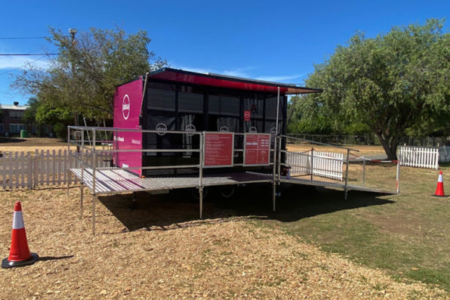An inquiry into the closure of regional banks has made a range of recommendations to prevent regional areas from losing more services.Being able to walk into a local bank is something that many people probably take for granted. Yet from 2017-2023, 35% of bank branches in regional Australia closed, and half of all ATMs in regional and remote areas were removed.
The effects of bank closures
Closing down regional banks can have a big impact. Many people have to travel further to do their banking while others are forced to go online. For some, especially those who may not be comfortable making financial transactions over the internet, this can leave them with no other options.
Local businesses can also suffer if they are unable to easily deposit and withdraw cash. This can contribute to people moving away from regional areas, and it can also discourage potential new residents.
For regional towns, this is not a new problem. Back in 1999 the Australian Government looked into the closure of regional banks and tried to pressure banks to keep regional branches open.
In 2004, it investigated the problem again. Both times, the major banks promised to limit regional branch closures. Both times, they continued shutting down branches regardless. As many people have pointed out, we can’t trust the banks to regulate themselves. Without intervention, they will keep closing regional branches because it is profitable to do so.
What can be done
The Senate Rural and Regional Affairs Transport References Committee has just released its report into regional bank closures. The report highlighted the need for the Australian Government to rein in the banks and protect regional communities.
Among other things, the Committee said that banking is an essential service that should be available to everyone, and that the Government should guarantee reasonable access to cash and financial services for all Australians.
The Committee also recommended that the Government think about setting up a publicly owned bank. To be more accurate, it recommended that the Government set up an expert panel to investigate the possibility of forming a publicly owned bank. This is a much more round-about approach than recommending it directly, but it is still good to see.
Unlike the major banks, a publicly owned bank would (in theory) act in the best interests of the community and the country rather than shareholders. It would also allow the Government to compete with the other banks in the industry, which would pressure them to improve their services to keep their customers. If the Government bank was the only one in an area offering face-to-face cash services for example, many businesses and customers would likely abandon their current bank.
Finally, it could make investment decisions based on community needs rather than maximum profits. These investments could be made in services, major projects or infrastructure upgrades in regional areas.
The Committee also recommended improving the Bank@Post service offered by Australia Post, and ensuring that all of the major banks offered this service to their customers.
Bank@Post allows some Australia Post offices to provide some banking services to customers of participating banks. However, these services are mostly limited to depositing and withdrawing cash, so it’s a poor substitute for a full bank branch in most communities.
CPSA previously made a submission to the Committee’s inquiry. The submission called for Bank@Post to be expanded to provide more services, and for bank closures to only be considered as a last resort. CPSA also recommended the introduction of regional banking hubs. These hubs are set up by several banks working together, and provide support staff, online banking assistance and ATMs for customers to access a wider range of services than are currently offered by Bank@Post.
In some other countries, such as South Africa, banks are expected to cater to the needs of all communities regardless of remoteness. Some South African banks have addressed this by providing mobile bank branches that can travel to remote communities to provide face-to-face services.
Australia’s four largest banks are among the most profitable in the world. If the major banks can’t find a solution that doesn’t involve shutting regional branches, then they just aren’t trying hard enough.
Being able to walk into a local bank is something that many people probably take for granted. Yet from 2017-2023, 35% of bank branches in regional Australia closed, and half of all ATMs in regional and remote areas were removed.
The effects of bank closures
Closing down regional banks can have a big impact. Many people have to travel further to do their banking while others are forced to go online. For some, especially those who may not be comfortable making financial transactions over the internet, this can leave them with no other options.
Local businesses can also suffer if they are unable to easily deposit and withdraw cash. This can contribute to people moving away from regional areas, and it can also discourage potential new residents.
For regional towns, this is not a new problem. Back in 1999 the Australian Government looked into the closure of regional banks and tried to pressure banks to keep regional branches open.
In 2004, it investigated the problem again. Both times, the major banks promised to limit regional branch closures. Both times, they continued shutting down branches regardless. As many people have pointed out, we can’t trust the banks to regulate themselves. Without intervention, they will keep closing regional branches because it is profitable to do so.
What can be done
The Senate Rural and Regional Affairs Transport References Committee has just released its report into regional bank closures. The report highlighted the need for the Australian Government to rein in the banks and protect regional communities.
Among other things, the Committee said that banking is an essential service that should be available to everyone, and that the Government should guarantee reasonable access to cash and financial services for all Australians.
The Committee also recommended that the Government think about setting up a publicly owned bank. To be more accurate, it recommended that the Government set up an expert panel to investigate the possibility of forming a publicly owned bank. This is a much more round-about approach than recommending it directly, but it is still good to see.
Unlike the major banks, a publicly owned bank would (in theory) act in the best interests of the community and the country rather than shareholders. It would also allow the Government to compete with the other banks in the industry, which would pressure them to improve their services to keep their customers. If the Government bank was the only one in an area offering face-to-face cash services for example, many businesses and customers would likely abandon their current bank.
Finally, it could make investment decisions based on community needs rather than maximum profits. These investments could be made in services, major projects or infrastructure upgrades in regional areas.
The Committee also recommended improving the Bank@Post service offered by Australia Post, and ensuring that all of the major banks offered this service to their customers.
Bank@Post allows some Australia Post offices to provide some banking services to customers of participating banks. However, these services are mostly limited to depositing and withdrawing cash, so it’s a poor substitute for a full bank branch in most communities.
CPSA previously made a submission to the Committee’s inquiry. The submission called for Bank@Post to be expanded to provide more services, and for bank closures to only be considered as a last resort. CPSA also recommended the introduction of regional banking hubs. These hubs are set up by several banks working together, and provide support staff, online banking assistance and ATMs for customers to access a wider range of services than are currently offered by Bank@Post.
In some other countries, such as South Africa, banks are expected to cater to the needs of all communities regardless of remoteness. Some South African banks have addressed this by providing mobile bank branches that can travel to remote communities to provide face-to-face services.
Australia’s four largest banks are among the most profitable in the world. If the major banks can’t find a solution that doesn’t involve shutting regional branches, then they just aren’t trying hard enough.
